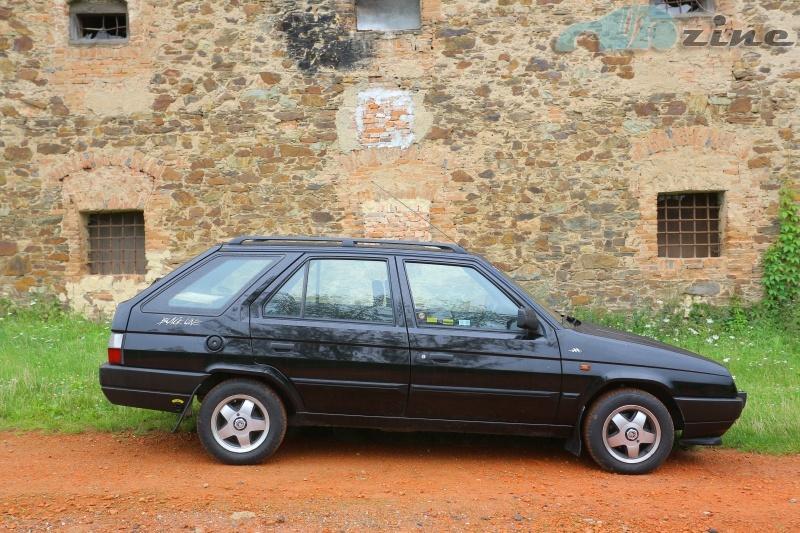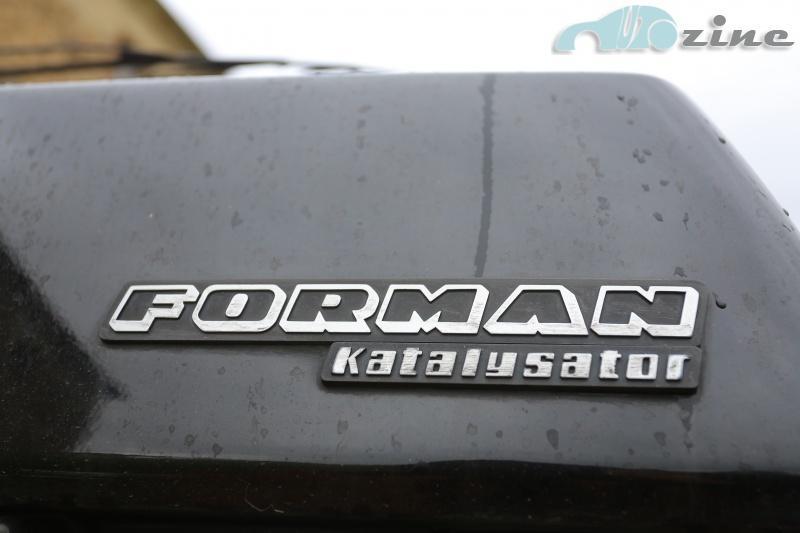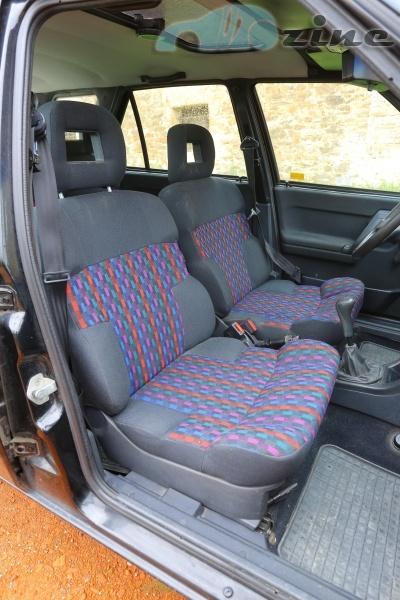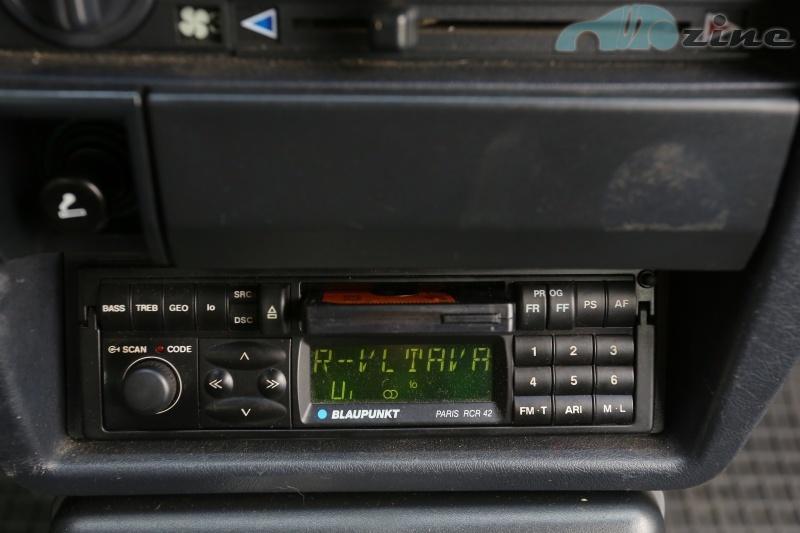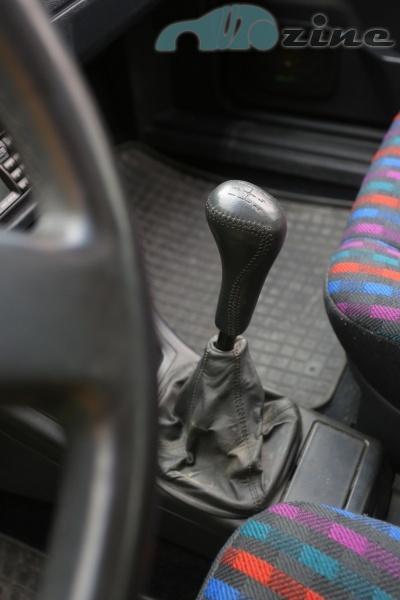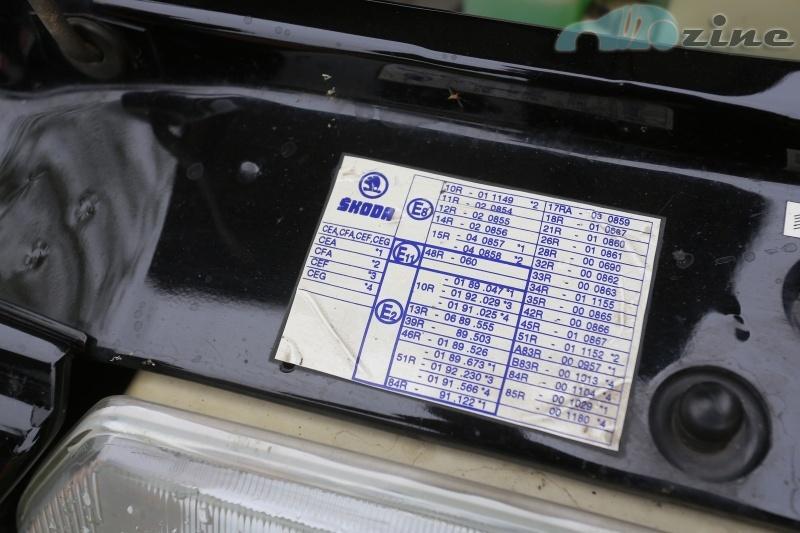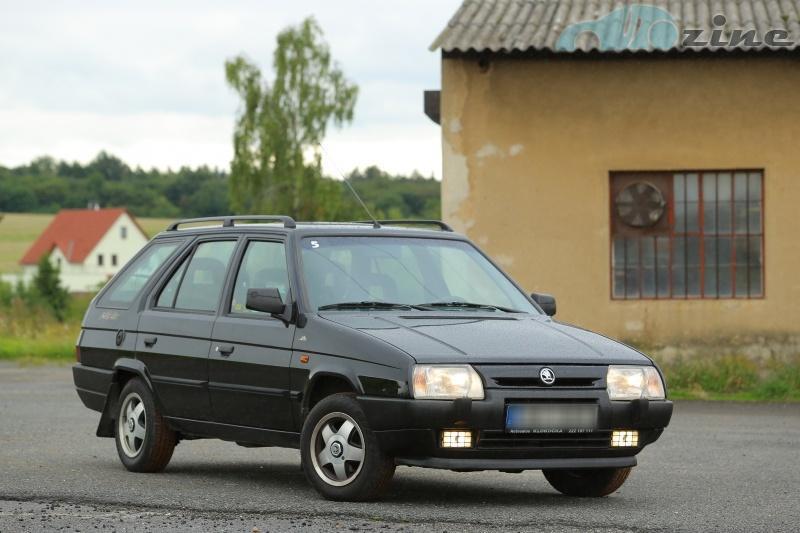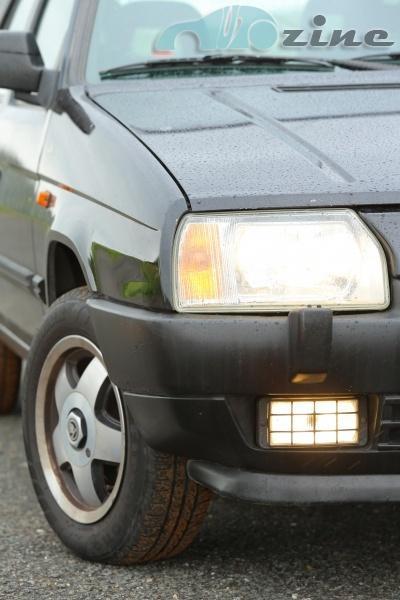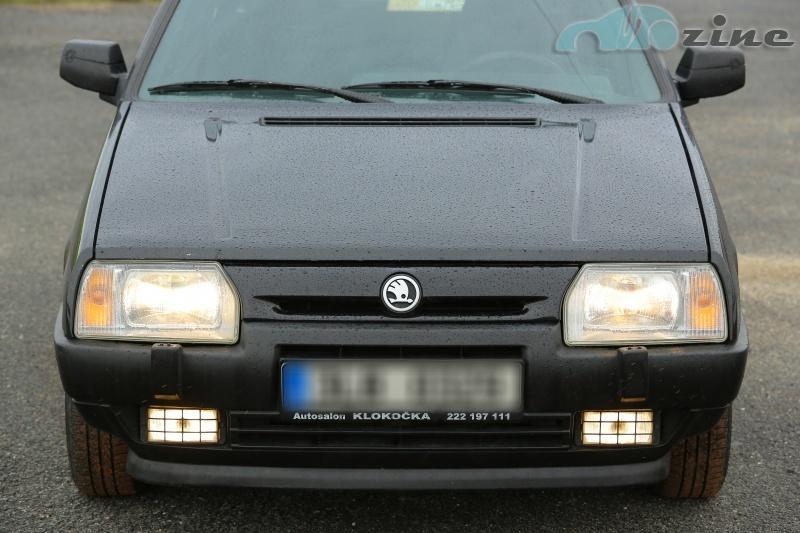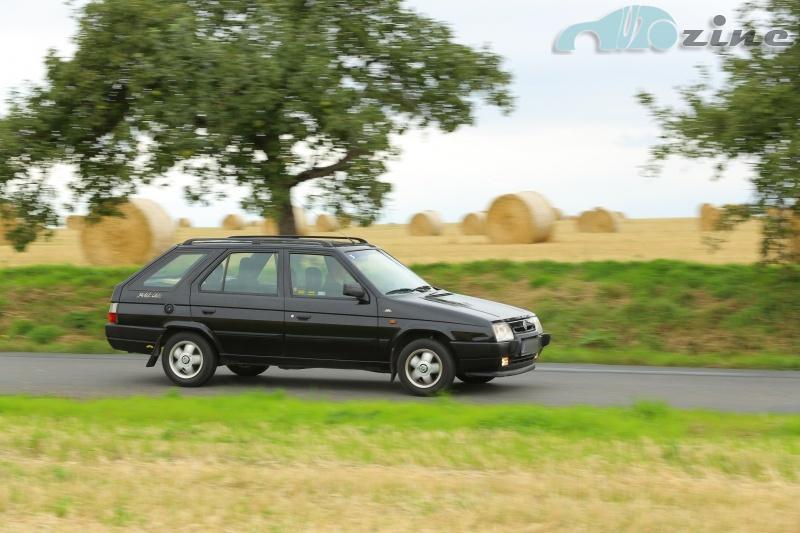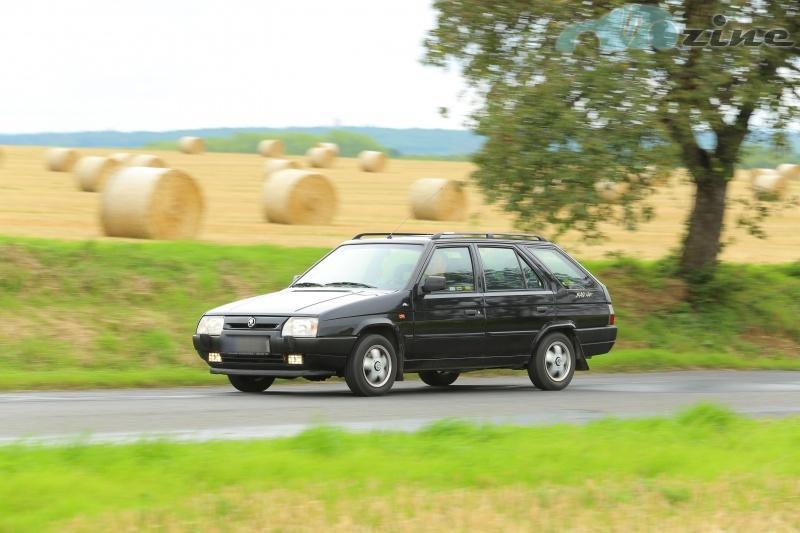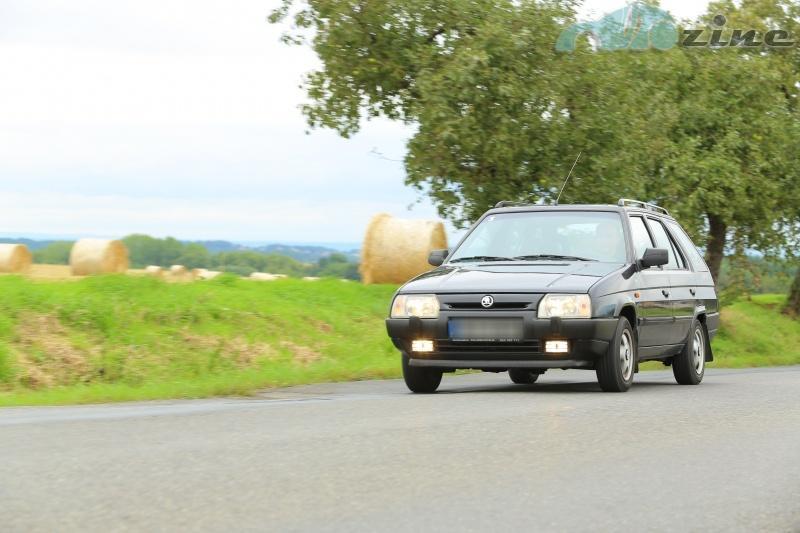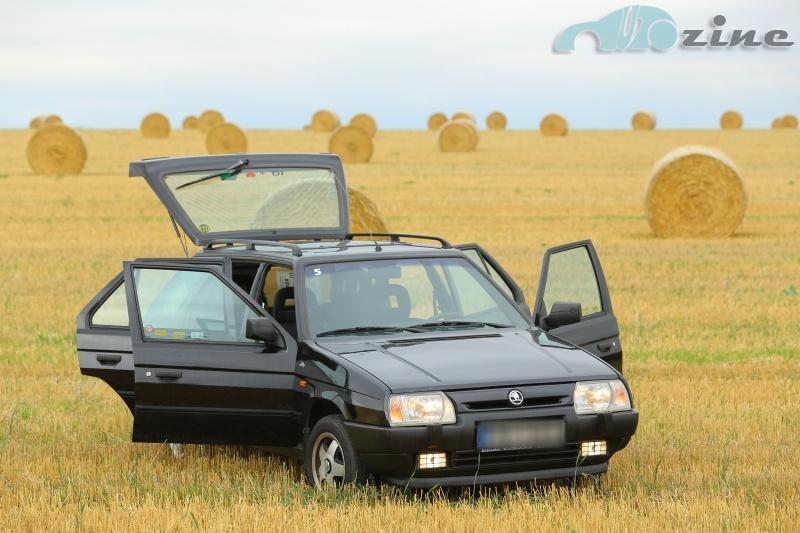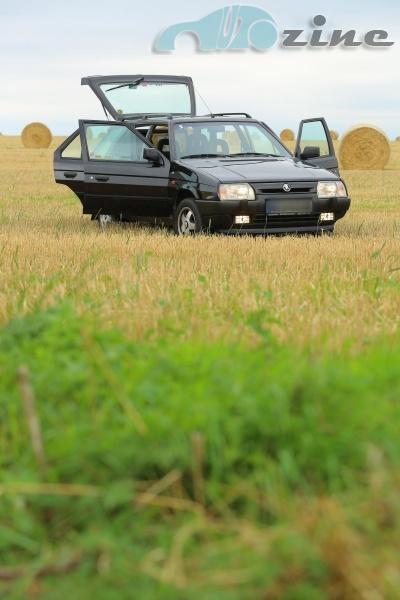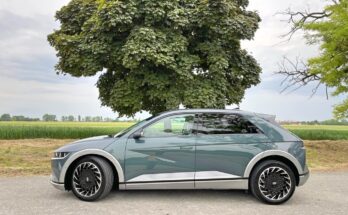You might call me a legend in this case, but I don’t mind at all. What we have here today is the Skoda Forman station wagon in the Black Line action edition and, in my opinion, it deserves to be called a legend.
We have already presented the history of the last model developed by the Mladá Boleslav automobile company under socialism, and at the same time, years later, the first car with an engine in the front and front-wheel drive, so we can get straight to the specific part. It is a Forman station wagon after the second modernization from 1993, which still has a 43 kW engine with a Jikov carburetor. According to the manufacturer, the second modernization brought with it 548 changes, for example, a different radiator grille with a logo in the middle and an air inlet, different bumpers, round and smooth cranks, and a tank cap, as well as plastics in front of the rear wheels, although these are missing on this Black Line. The wheel track also changed, and the pitch of their bolts went from Italian to Volkswagen dimensions. But the biggest change was the interior, where brown was replaced by black, and most of the materials were now of much higher quality. The door panels and the steering wheel now had more expressive and graceful shapes.

The main trump card of the Black Line action edition, presented at the Paris Motor Show in 1993, was the really rich equipment. The already pretty polished GLX type (that is, polished for its time) received Ronal Centra alloy wheels, a sunroof, central locking, smoked rear lights, a decorative exhaust tip, headlight washers, a locking box, a storage center panel, a digital ceiling clock, acoustic signaling lights on when the engine is off and the doors open, cigarette lighter, tinted windows, leather-stitched steering wheel and gear lever, Blaupunkt Paris radio with six speakers, two of which are tweeters (Favorites only had four) with gold speaker parabolas and Black Line lettering on their covers, height-adjustable seat belts, special covers for all seats and fog lamps. Just consider what we take for granted today, but back in 1993, a rear window wiper was still considered a premium feature. Black metallic with the name Eben was unique. There was a stylized Black Line inscription behind the rear doors and a curve sticker on the front fenders. A total of 6,500 cars were produced, some of which already had injection engines. And the price then ranged from 210 to 269 thousand crowns.
But it’s not 1993, and we didn’t have to visit a local dealer, and we also can’t resist the temptation to buy some twisted and multi-piece welded used western shoulder from a dubious bazaar. Sure, I’m teasing Forman a bit, but dude, maybe you’ll understand me. When the year was 1993, there was a new Forman parked in our garage. Although it wasn’t Black Line, although… But more on that in a moment. We originally had a dark blue LX with a carburetor, which, of course, was produced by the famous Weber. Although we were supposed to move in with a ” syringe ” Black Line, but just before the planned change of cars, it had an accident, so only all the lean parts were moved into our LX, except for the beautiful alloy wheels, which were also caught in the accident. But anyway, I still have a strangely nostalgic relationship with digital watches and leather accessories, and speaker radios. I fell asleep on those seats with colorful patterns (the most beautiful ones that were put in Favorits and Formans) during trips to the Makarska Riviera. But the past is long gone, and now I will have to look at Forman through the lens of today. Will it hold up at all?
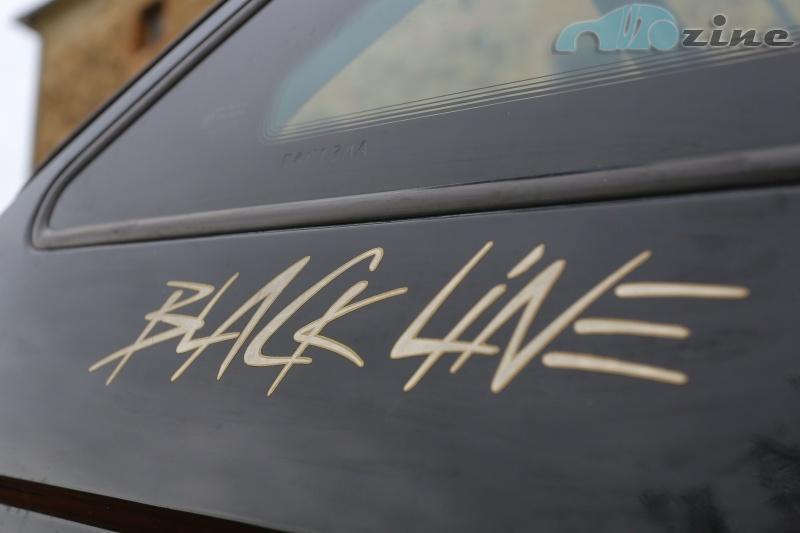
And you know what? I probably won’t be able to do it, nostalgic memories are nice monsters that erase the bad from memory more easily than an Alzheimer’s patient erases his medication, while the good ones, on the other hand, look better and better over time. Just opening and then slamming the door makes me feel like I’m five years old again, sitting on my dad’s lap and turning the steering wheel as we pull into the garage. God, what a beautiful childhood it was. Today my father would probably be locked up for that, I would be taken into someone else’s care, preferably to another country, and Rowling would also write in the newspaper that they torture children here by forcing them to drive cars. Somehow the world is changing for us, and it’s not always for the better. Maybe that’s why the memories are so good.
But back to Forman, who still looks really good after all these years. Someone recently tried to tell me that the shape is desperately unfashionable. But come on, it was designed by Nuccio Bertone, and the car still looks great. It’s just a shame about the many compromise solutions, such as unnecessarily large headlights or unpainted bumpers. But the times simply did not favor progress at that time. However, basic curves still look modern, especially because edges and geometric shapes are coming back into fashion. And the art of constructing a station wagon so that the same parts as a hatchback can be used is genius. Just consider how much money had to be saved in production. And I even dare to say that the Forman looks even better than a short hatchback. Those props seem somehow more balanced to me. Inside, there is relatively enough space on both rows of seats. It is understandably better at the front, but nobody really suffers at the back either. And since Euro NCap didn’t exist back then, the doors are thin and the car is much more spacious in width. And for the same reason, it has a better view thanks to the thin posts. And the trunk is really big in the station wagon. Well, half of the space here is taken up by the gas tank, but it will be gone soon. Without it, Forman can carry just about anything and still sleep in it. Just forget about such modern things as a double floor and folding the backrests flat. It may seem obvious to us today, but in the early 1990s these were completely unknown concepts.
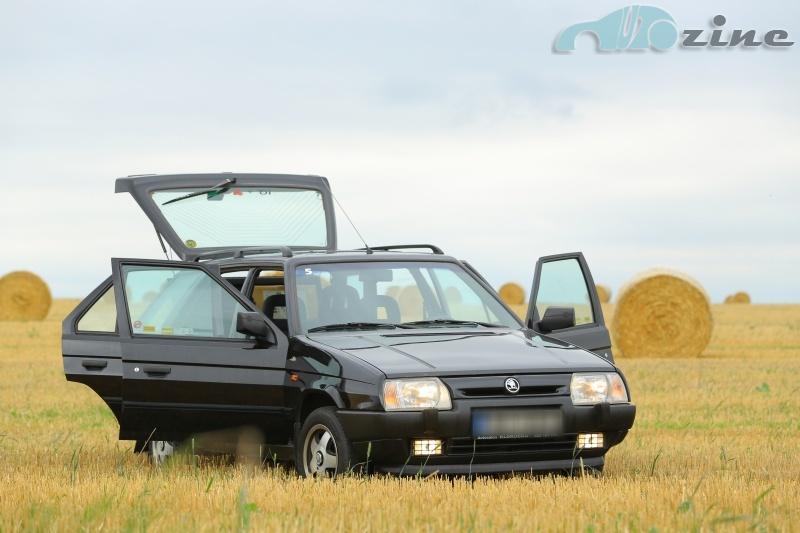
I start, there is a typical high whistling sound, and the engine jumps immediately. Try the gearing, although it is no different from the more modern Felicias, which I have a lot of mileage with, and go. And lo and behold, the steering wheel still clicks when turning. I wouldn’t have remembered that, even though it was typical for more modern Favorites. And also, the blinker levers click quite hard. I can safely recognize all these sounds. This is going to be a very nostalgic ride. Let’s see how many things from my childhood I can still remember.
The seat holds me well, and overall, I find it somewhat stiffer than the regular GLX seats, with which I also have extensive experience. Maybe she’s just less seated. I don’t want to believe that they put a different foam in the filling. It’s a good thing because, after all, the inclinations in the corners are present. The forks were tuned quite comfortably, so a sharper ride was naturally manifested by some swaying. The position behind the wheel is not exactly from the realm of dreams, but it sits better here than in the second-generation Fabia. And when it comes to the steering wheel, the two-armed round rim holds very well, perhaps also thanks to the chosen leather. Shifting is stiffer than I remember from other Favorites. But he also has a rematch. And when we look at the central tunnel, the handle with the code catches our eye, perhaps the only non-original thing in the Forman, but the previous owner was very careful about the security of the car. However, the action editions were and still are narrow-profile goods. Otherwise, motor-wise, the carburetor is quite lively and dynamic. Yes, angry people will turn their noses up today, but two decades ago, small cars weren’t much more dynamic. The advantage of the carburetor is definitely its inertia. The revolutions do not fall as quickly as with models with injection, and driving on a hilly road is smoother. Forman also owes it to the low weight because you won’t find so many safety reinforcements in the bodywork. But the station wagon is also heavier than the short Favorit. On the other hand, with more rear overhang, it is also more stable. That’s why the prototype sixteenth OHC was only put into Forman and pulled the car up to two hundred. That must have been an earplugging experience. After all, even the more plebeian 120 km/h is already a bit of a sign of noise.
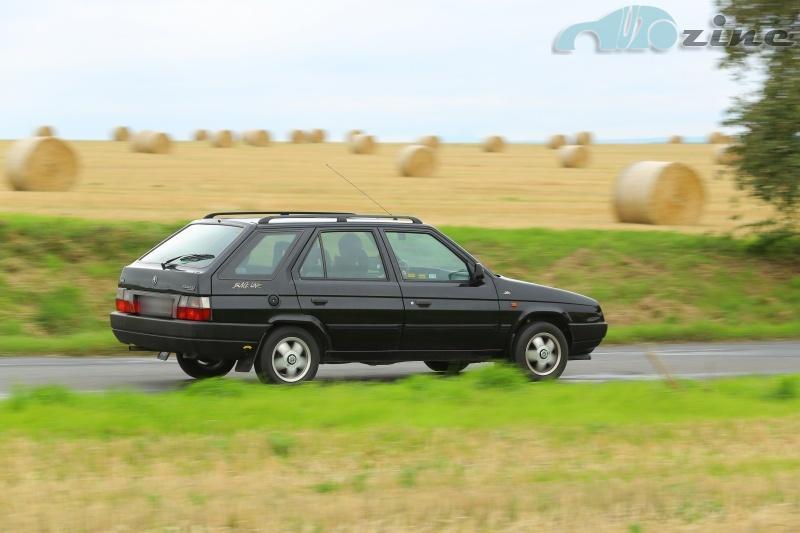
I am excited about Forman. I’ve always liked the action edition of Black Line the most, even more than the more luxurious Solitaire . And when I get to a piece in its original condition, which has everything as it was two decades ago in a car showroom, then my heart just beats with joy.
Finally, we ask the owner Michal Ulvr a few questions:
Why did you choose this particular car, was it your long-term dream or a momentary decision?
Forman Black Line was for me the top luxury in the entire Favorití model line, it already looks elegant at first glance, and at the same time playful. I wanted more of a 50 kW injection, but when I saw the beautiful condition this piece was in, there was nothing to worry about.
How hard was this car to get?
Paradoxically, it was not difficult at all, a good friend gave me the contact to the then owner, who also met him with his car in front of the supermarket. The gentleman was extremely helpful, he probably wanted “Karlík”, as we call him, to go into good hands. Perhaps he wouldn’t be disappointed if he saw him now.
How do you live with the car in normal traffic? And do you have it for pleasure or for daily use?
I had it in daily use for a short time, the family asked for their own, but now it’s just for pampering and for fun. As I often say, until it’s broken, a maintained Forman is still the perfect car for today’s roads and highways.
What was the most interesting experience with your car?
Every year I enjoy with Karlík the nationwide gatherings of the Favorit Club, but I probably had the most fun when I presented the car, which had been kept strictly secret until then, to my wife, who does not like old cars and especially Skodas very much.
Are you planning any modifications or repairs on it?
They say that there is always something to fix on Skoda cars, Karlík is definitely an exception. In the following year, I want to remove the LPG from it, which was once an absolute necessity, and maybe change the front fenders in time.
What is your biggest motoring dream?
I think I’m experiencing it now. Anyway, I’d like to take a ride in the Cord 810 sometime and maybe eventually get a classic workman’s 1202 STW .
We thank Auto, Motor & Sport photographer Ondřej Kroutil for lending the photos



